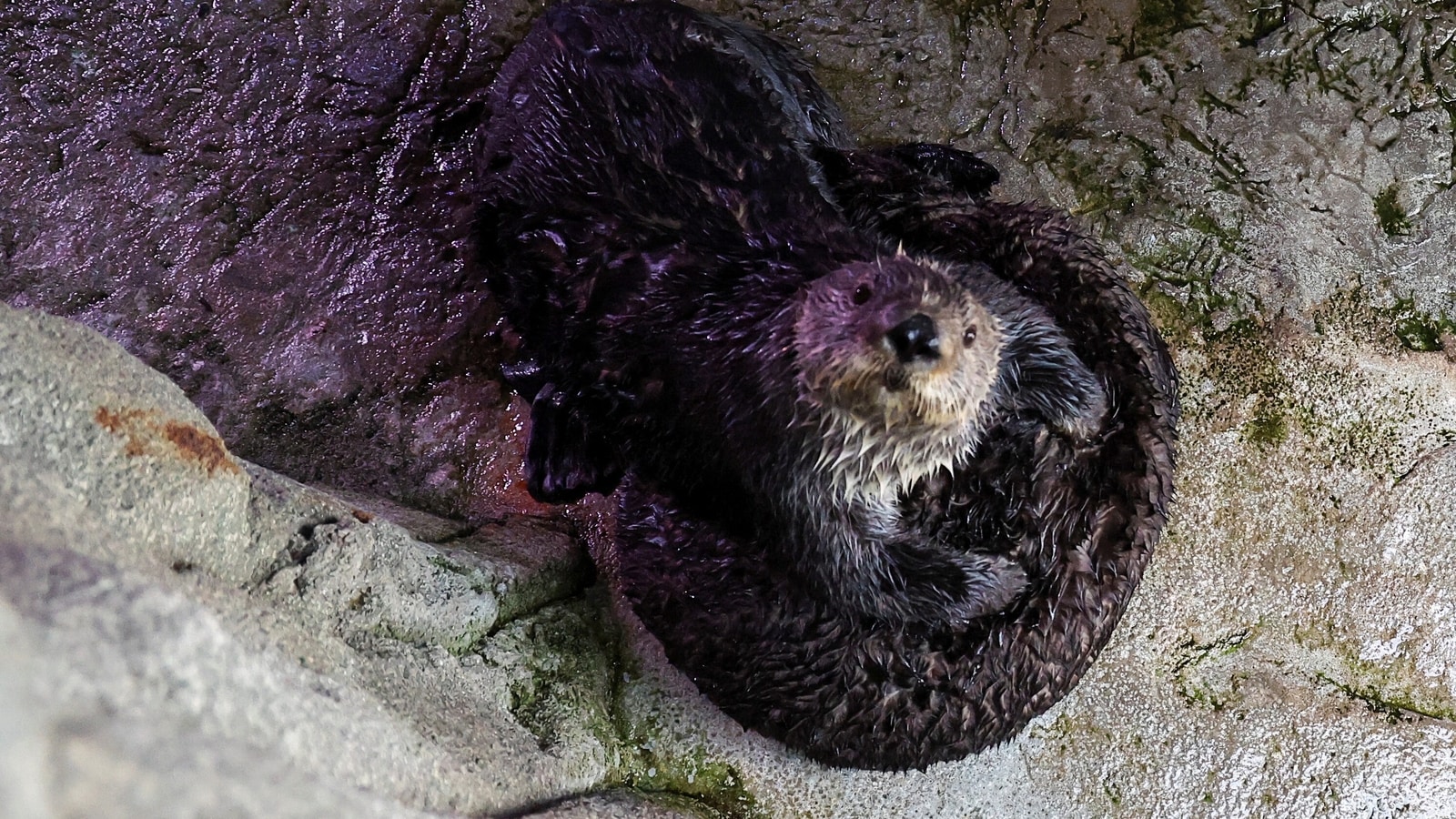The Collaboration between the Aquarium of the Pacific in Long Beach and the Monterey Bay Aquarium to Assist Stranded Sea Otter Pups
In a collaborative effort, the Aquarium of the Pacific in Long Beach is joining forces with the Monterey Bay Aquarium to facilitate the pairing of stranded sea otter pups with surrogate mothers. Annually, approximately 10 to 15 sea otter pups are discovered stranded along the California coast, often a result of storms that lead to the separation of mother and offspring.

The primary objective of this partnership is to pair these pups with surrogate sea otter mothers to impart essential life skills and eventually reintroduce them to their natural habitat.
As a part of this initiative, the aquarium has successfully initiated the bonding process between their first surrogate mother, named Ellie, and a yet-to-be-named pup.
Megan Smylie, the sea otter program manager at the Aquarium of the Pacific, emphasized the significance of this program by stating, “That mom is going to teach them all of the behaviors that we cannot teach, being people.” She further explained, “That adult female will start to mimic behaviors that the pup should learn, will help it groom, will help it forage, will help it teach prey manipulation, how to open up shells and anything that they would need to know that humans are unable to teach them.”
Sea otters, classified as a protected species, were once extensively hunted for their distinct fur, which boasts the densest hair of any animal, with up to a million hairs per square inch (6.45 sq cm). Initially presumed to be extinct, a colony of 50 sea otters was discovered off the coast of Big Sur in the 1930s. Presently, their population has increased to around 3,000. However, further efforts are essential not only for the survival of the species but also to safeguard California’s near-shore ecosystems.
Brett Long, a senior director at the Aquarium of the Pacific, highlighted the pivotal role of sea otters in maintaining ecological balance by controlling herbivores like sea urchins. This control prevents overpopulation of sea urchins, which could potentially devastate kelp forests and eel grass beds.
The intricate ecosystems of sea grass and kelp play a vital role in fostering biodiversity, offering protection against climate-related events, and serving as a potent mechanism for carbon sequestration, as noted by Smylie.
Despite their adorable appearance, sea otters are known for their territorial nature and are often likened to “wolverines in the water” by Long. Additionally, their voracious appetite demands a significant amount of seafood, with sea otters consuming 25 percent of their body weight daily in high-quality seafood. Consequently, feeding a 45-pound (20-kg) otter translates to 10-12 pounds (4.5-5.4 kg) of seafood per day, incurring an annual cost of $40,000 for the aquarium and necessitating continuous fundraising efforts.
Having already rescued eight stranded pups, the two aquariums aspire to encourage other organizations to participate in this collaborative endeavor to bolster the wild population of sea otters and safeguard the coastal ecosystem of California.
Long encapsulated the essence of this endeavor by stating, “This is a bigger purpose. This is a higher challenge. So we invest and we invest a lot but we’ve all now learned and appreciate, boy, you see that juvenile otter survive out in the wild. That feels incredible.”
